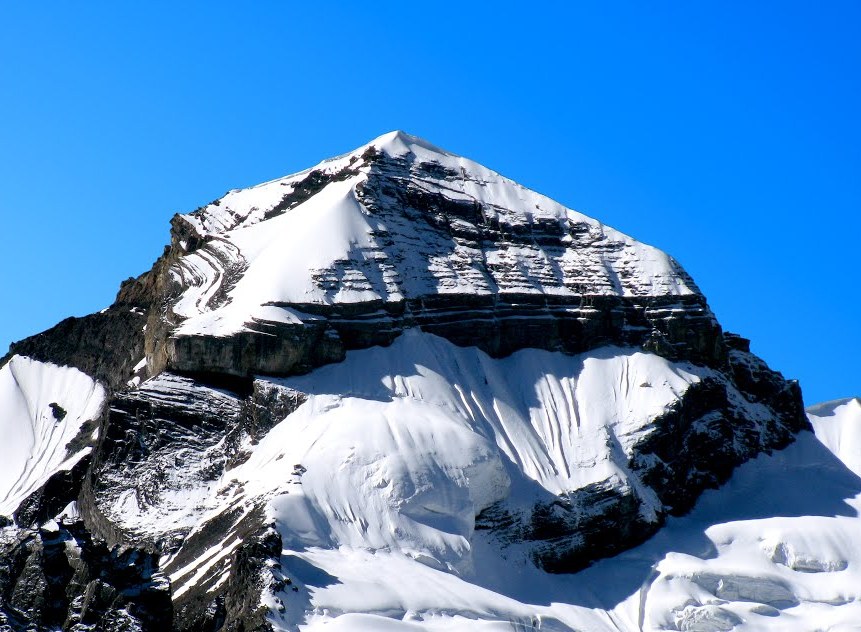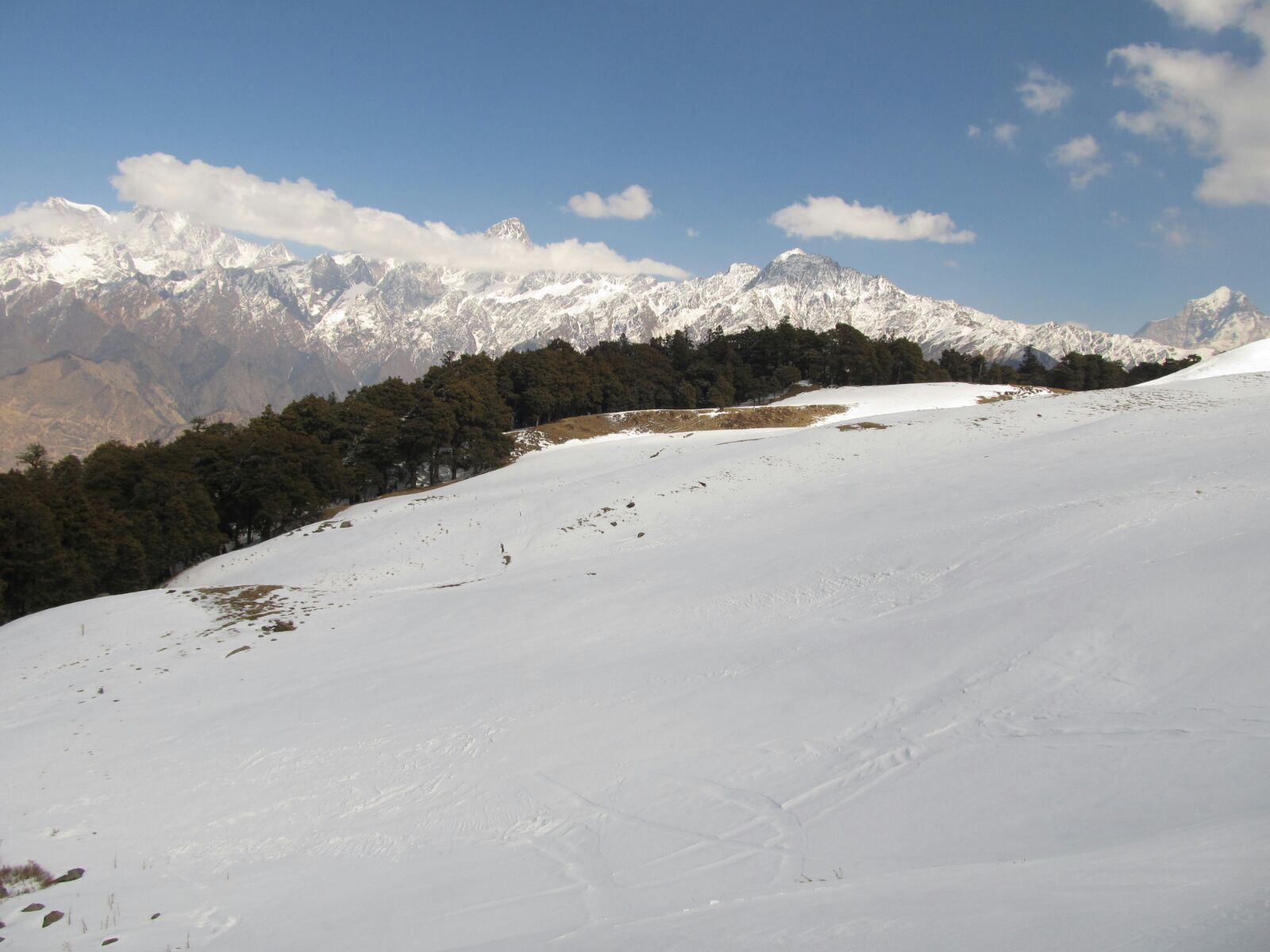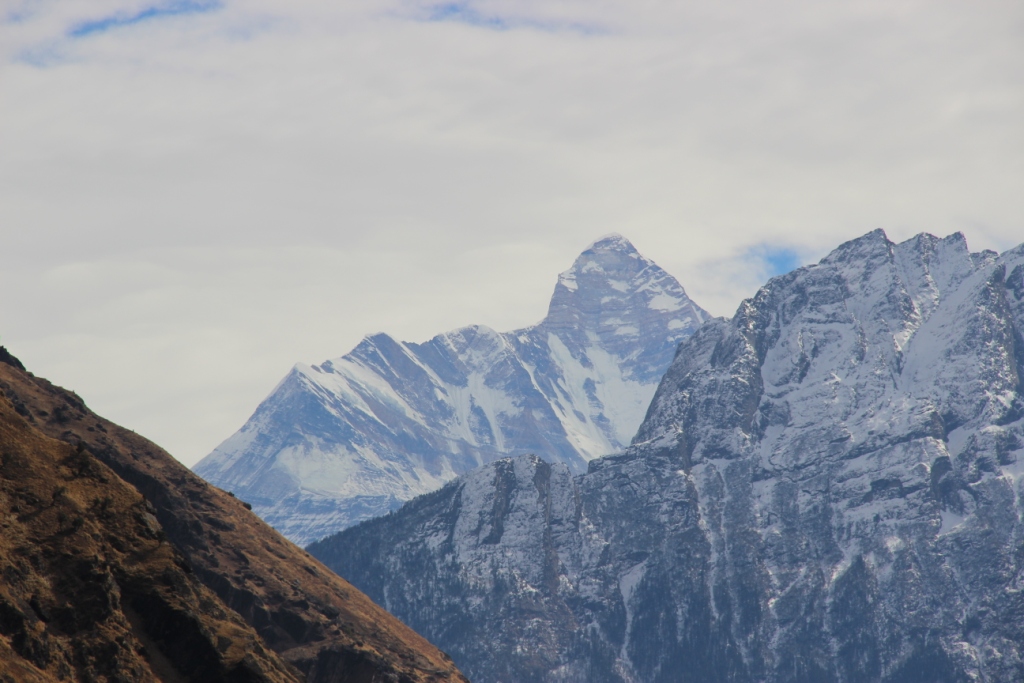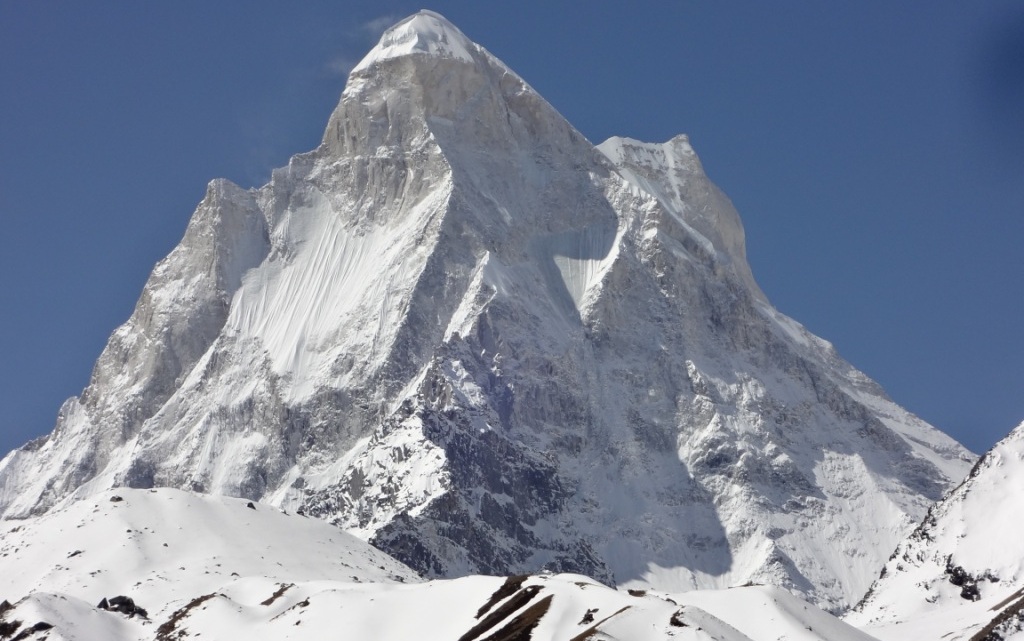Trekking in Uttrakhand is one of the favourite tourism activities. There are numerous low and high mountain trekking routes in Uttarakhand. Trekking routes as famous as Mansarovar Yatra, Chota Kailash, Nanda Devi sanctuary etc. are either in Uttarakhand or start from here. Short trekking routes such as Deoria tal, Chandrashila, Nag tibba etc. are also very much in demand.
Trekking is very often confused with mountaineering. Whilst mountaineering is very much technical in nature and entails many preparations by way of equipments, provisions, technical data, weather reports etc., trekking does not require anywhere near as much preparations and can be taken up as a sport. Mountaineering at times can become hazardous, but this is normally not the case with trekking.
The goal of the mountaineer is generally the conquest of a peak, whilst the aim of the trekker is to take an interesting walk which in the Himalayas would mean reaching certain heights and reaching religious shrines , glaciers, snow-belts, meadows and other high-altitude attractions. During the summer months, treks can be organised up to heights of around 4000 mtr. and during winter months around 1800mtr. Attempts beyond these heights should be made only when properly equipped.
Trekking is very often confused with mountaineering. Whilst mountaineering is very much technical in nature and entails many preparations by way of equipments, provisions, technical data, weather reports etc., trekking does not require anywhere near as much preparations and can be taken up as a sport. Mountaineering at times can become hazardous, but this is normally not the case with trekking.
The goal of the mountaineer is generally the conquest of a peak, whilst the aim of the trekker is to take an interesting walk which in the Himalayas would mean reaching certain heights and reaching religious shrines , glaciers, snow-belts, meadows and other high-altitude attractions. During the summer months, treks can be organised up to heights of around 4000 mtr and during winter months around 1800mtr. Attempts beyond these heights should be made only when properly equipped.
In ancient times, people were forced to trek from place to place in the absence of transport facilities. From times immemorial, the mountain folks have been trekking over the hills for their day to day affairs. The great Adiguru Shankaracharya trekked deep into Uttarakhand in the eighth century A.D. and first opened up the trekking routes to Himalayan shrines. Later a zealous philanthropic organisation called ‘Kali Kamli Wale’ set up a large number of dharamshalas at carefully chosen distances. What the trekking huts on some routes are for the trekkers of today, dharamshalas were to the religious trekkers of those days. Lord Curzon, E.T. Atkinson, Dr. T. Longstaff were among some of the keen British trekkers who opened up new trekking routes in high altitude areas. Thus trekking as a necessity to reach certain purposeful destinations has a hoary past but by the first quarter of the twentieth century, it developed into a popular sport and an organised adventure. Today trekking has become very popular among not only the young but the able bodied men and women alike.
The Central Himalayas in Uttarakhand have some popular trekking routes. This area has numerous temples, rich forests of deodar, cypress, pine, lush verdant valleys, green meadows, which in summer are carpetted with alpine flowers. A large variety of flora and fauna make these trekking routes ideal for nature study. The best time for organising these treks is in May, June and September, October. A few places, such as the Valley of Flowers and the (bugyals) meadows are at their best during the rains of July and August.
Trekking should always be organised in groups. Barring the pilgrim trails, most of the trekking routes do not have accommodation facilities. On such routes, temporary huts of the nomadic gujars and caves can be used, but it is always advisable to carry a high-altitude tent .
When you plan to trek a meadow or scale a summit, the first few things you should keep in your mind is as follows:
- Altitude of summit and the trek route.
- Trek distance and condition.
- Weather pattern of the trek route.
- Trek level: easy, moderate, hard and very hard.
To know the altitude of the trek route and the summit is very important, because the temperature and oxygen percentage goes down as you climb higher. So, you may need to acclimatize your body for higher altitude trek by staying and camping near summit for one day.
To know about the trek distance and condition is also very important before you start the journey. Few treks are steep and few are not. You may not cover the same distances of two different treks in same time frame due to the difference in the slopes and the path conditions of the treks. Don’t venture the treks on your own, sometimes you may take wrong direction and spoil the journey. Always take professional help.
Weather pattern should also be checked for trekking. At many places in mountainous regions, the afternoon brings shower. So the movement of your trek should start early and as fast as possible before the afternoon rain starts pouring. And during the rainy season, it almost rains every day. So, never forget to keep rain proof clothes (i.e. jackets, pants etc.). The better situation can be known through your travel agent or guide.
The understanding of the trek level is also very important. As soon as you choose the hard level trek, ensure to keep yourself physically fit. Sometimes, trekkers fall sick on the way and whole trekking journey gets jeopardized.
In the above paragraphs, it was tried to convey that one should have the knowledge of the opted trek as much as possible. The trekking gears and clothes should be kept accordingly.
Few other important points:
- Never drink alcohol, caffeine or something which dehydrates the body, when you visit or trek higher altitude.
- Always wear warm clothes during higher altitude trek.
- Always wear caps, one for night and one for day time to protect you face from sun burn.
- Don’t forget to carry water bottle, walking stick, rain proof sheet, hiking shoes, mittens, torch, dry fruits, lip balm, winter face cream. For more please click
- Never forget to keep one first aid box for your group.
- This is the last point which is very important. The exercise is needed for 2-3 days’ or more days’ trek. Prepare yourself by jogging at least 30 minutes for 3 days’ a week for a month. Do the knee exercise, which is very important.
- ……………………………
- Source:
- http://www.dreammountain.net/trekking-in-uttarakhand/




